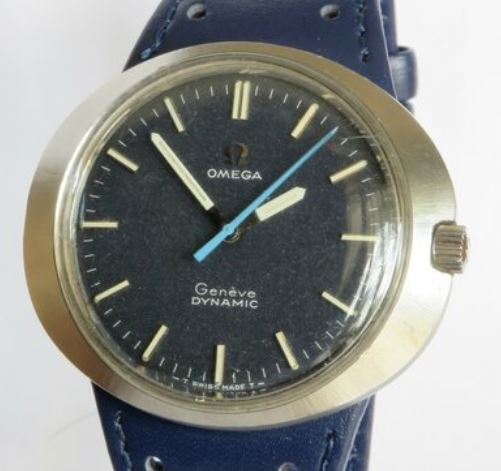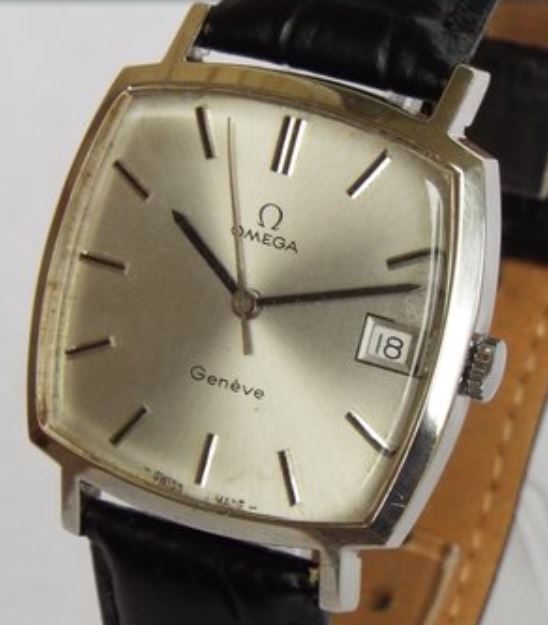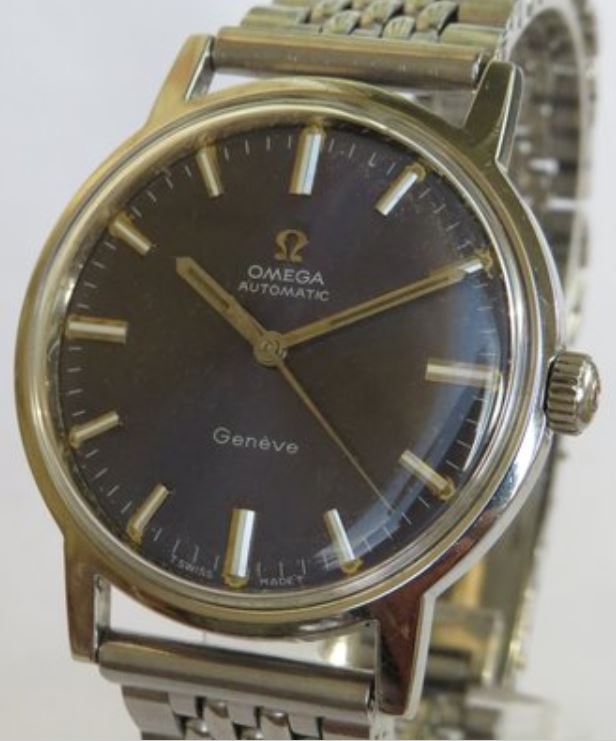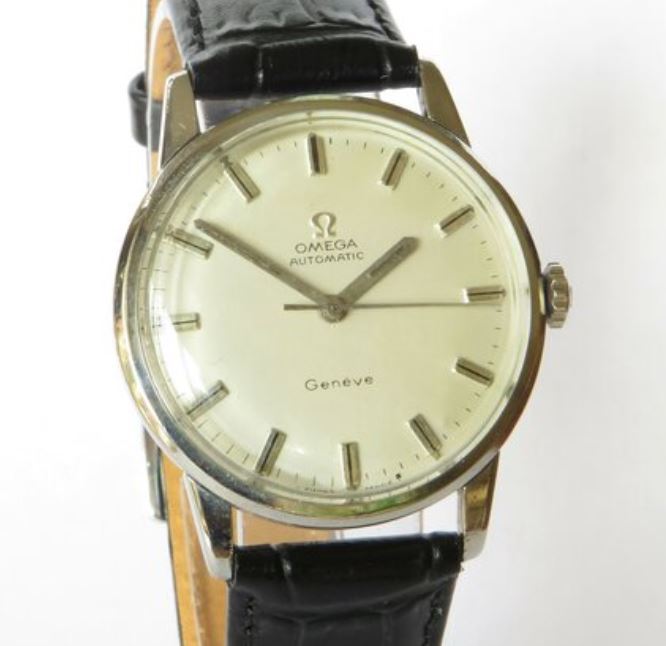The Omega Genève is one of Omega’s lesser-known brands. It was an entry-level watch of good quality that fell by the wayside in the late 1970s. Although when it launched in the 1950s, it was a high-tier dress watch, second only to the Constellation. Later, in the 1960s, Genève’s target audience shifted to the entry-level market, where the focus was on good-quality, but affordable Swiss watches. I have had the good fortune to own an Omega Genève, and have found it a rugged, reliable dress watch. I thought the Genève range deserved a detailed history.
Origins and early market position
The Omega Genève name first appeared in the early 1950s (the consensus is 1952) on Omega’s dress-watch models. Initially, it was applied to hand-wound 30 mm watches, a tribute to Omega’s 30 mm calibres that had won precision awards at various observatories:
1940: 1st place with 30mm calibre at Kew Teddington.
1945 1st place with the 30mm calibre at the Geneva Observatory Category D competition (< 30 mm) .
1950: 1st place for tourbillon Cal. 30I at Geneva Trials.
(Omega awards at Chronopedia)
Unsourced references in online forums suggest the Omega Genève range first appeared in 1952 or 1953. The earliest verifiable example, based on the serial number that I could find, was this example on Chrono24, which dates to 1954. The suggested date range of 1952 or 1953 seems likely.
In the 1950s, Genève watches were among Omega’s top-tier dress pieces (second only to the Constellation chronometers). The name evoked Omega’s Geneva heritage and observatory successes. By 1953, examples such as reference 2903‑1 had been launched, and the Genève line quickly became a distinct dress series. However, the success of the Omega Professional line (Seamaster, Speedmaster, and Railmaster) in the late 1950s unfortunately hurt the marketing of the Geneve line. This disparity was then reflected in retail prices.
Mechanical (manual-wind) Genève models
The Omega Genève line began as a range of high-quality manual-wind dress watches. They typically housed Omega’s proven 30 mm‑series calibres, e.g. calibres. 265/269, and later calibres 30T1/30T2 SC PC, etc. (Ranfft database). These movements were the same robust, high-precision units used in Omega’s Constellation and Seamaster lines. These early examples of the Genève measured roughly 34 mm in diameter. The styling was classic and elegant with simple dials, applied markers, and slim cases (typically in stainless steel or gold). and sometimes included a date function. The name “Genève” appeared at 6 o’clock on those versions with a centre seconds hand.
Automatic Genève models
As Omega introduced more automatic movements in the 1960s, the Genève line grew to include many self-winding models. These often used the 550/560-series automatics (e.g. calibres 552, 565, 601, etc.) with 20+ jewel counts (EmmyWatch database). These Genève automatics usually added a date window and thicker cases to accommodate the rotor. Other automatic versions included day/date, rotating bezels, or unusual lugs. Overall, automatic Genève watches retained the line’s dressy appearance but offered greater convenience and volume production. By the late 1960s, most new Genève models were automatic units sold with competitive pricing.

Quartz Genève models
Dare we say the word “quartz” in these pages? Unfortunately, we must. In the early 1970s, Omega began equipping some Genève models with quartz movements. These Genève Electronic/Megaquartz watches (c.1974–79) often carry “Electronic” or “Megaquartz” on the dial and a red-background Omega logo at 12 o’clock. They were typically large (around 39 mm) and featured date or day/date displays. Omega typically used the calibre 1300-series (32 kHz quartz) in many Genève models. In this era, Genève became the carrier for Omega’s affordable electronic movements. The quartz Genève models are easy to spot by their engraved casebacks and often angular or integrated-bracelet designs.
The evolution of the Genève line
Over time, the Genève collection expanded and evolved dramatically in design and technology. During the 1960s and 70s, Omega experimented with new styles under the Genève banner. The Genève “Admiralty” (1968), a 36 mm steel automatic (calibre 552) with a vibrant orange anchor motif on the dial and prominent crown guards. The Genève Dynamic (introduced in 1968) featured an elliptical “flying saucer” case shaped for ergonomic comfort. The Dynamic’s lightweight aluminium/alacrite case and revolutionary strap attachment made it stand out. Raymond Thévenaz designed the Genève Dynamic collection. His ellipse case shape was the result of an extensive study of the wrist’s anatomy. The watches were produced with automatic movements and Unicoc cases, with the crystal hermetically sealed, providing water resistance up to 30 metres (Omega Genève Dynamic at Somlo). The Dynamic was later rebranded “De Ville Dynamic” in the 1970s.

Throughout the late 1960s, the Genève line divided into “classic” dress models and more “playful” designs. Dress pieces kept traditional lugs and markers, while others got bold colours, racing‑style dials, or integrated bracelets (a few had rudimentary “diver” bezels). In short, the Genève range continuously absorbed new designs, from sword‑hand dress watches to sports cases, even as Omega’s other lines (Seamaster, Constellation) specialised in sports/chronometer niches (Omega Genève at Enigwatch).
Market segment and competition
Initially, Genève watches were positioned just below Omega’s top Constellation models, in effect, second-tier luxury dress watches. In the 1950s, the Genève name was associated with finely finished timepieces that were a less-expensive alternative to the Seamaster and Constellation, but still above the entry level. By the late 1960s and ’70s, however, Genève had shifted toward Omega’s volume-driven, youth-oriented segment. These models used high-quality movements but were priced competitively for younger buyers. In other words, as Omega broadened its lineup, Genève covered the mid-market.

Within Omega, Genève competed with the dressy Seamaster references (steel 30 mm cases) and the emerging De Ville collection. Externally, Genève models faced rivals such as Longines and Tissot in the Swiss mid-luxury space (similarly refined, yet affordable watches). Pricing reflected this. A vintage steel Genève might have sold for significantly less than a gold Constellation or Rolex Datejust in the same era. However, later on, Genève chronographs and divers could approach Seamaster prices due to complexity and scarcity. In short, Genève was Omega’s affordable luxury line, occasionally better equipped than entry-level Seamasters, but not as exclusive as Constellations.
Links to other Omega Lines
The Genève line often overlapped or even merged with Omega’s other collections. In the 1960s, “De Ville” was introduced (initially as a subset of the Seamaster) as another line of dress watches. Genève and De Ville sometimes shared cases and movements. The Genève Chronostop chronograph began life under the Seamaster name (1966), but subsequent batches were simply sold as Genève Chronostop. In practice, by the 1970s, Genève had become the catch-all brand for many of Omega’s new dress and quirky models, while the De Ville name grew as the premium dress range. Omega’s Seamaster line remained the main sports/diver series, and the Constellation stayed strictly as chronometer‑certified watches.

Discontinuation and legacy
The Omega Genève line was officially discontinued in 1979. One often-cited reason is Swiss trademark law. The Canton of Geneva required watch brands to have a manufacturing presence in Geneva to use the term “Geneva” on dials. With Omega’s Geneva factory closed by 1967, this likely forced the removal of the name. By then, Omega was consolidating its lines anyway, and the Genève had swelled into a very broad range. Its market niche was absorbed by the De Ville series (which became Omega’s main dress watches) and by updated Seamaster/Constellation models. In subsequent decades, Omega never revived “Genève” as a collection title (modern Omega focuses on names like De Ville, Seamaster, and Constellation) (Swiss Made at Wikipedia).,
Summary
Vintage Genève watches remain popular with collectors for their varied styles and solid movements. They are generally priced considerably lower than their better-known brethren. They make a good starting point for those wanting to begin a collection with a noted brand, but without breaking the budget.
Related content
Omega Genève at Chrono24.

Leave a Reply